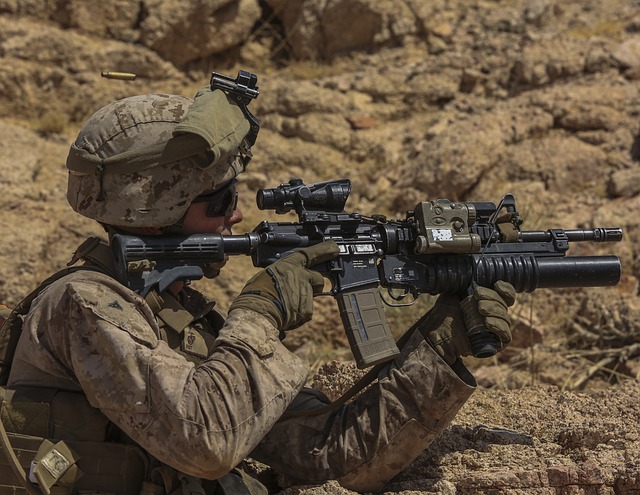
The US Army National Guard Flag is a significant emblem representing the country's fifth military branch, honoring over 350,000 service members. Its design reflects historical ties to the original thirteen colonies and symbolizes the collective dedication of those who serve in the National Guard. This flag has played a crucial role in both domestic security and international missions, standing as a testament to the service ethos of American citizens who have chosen military service. The history of the US Army National Guard Flag is interwoven with key moments in U.S. history, from the Revolutionary War to present-day operations. The Flag Code provides guidelines for its proper display and handling, emphasizing respect for this symbol of duty and service to the country. On national holidays and designated days, it should be flown from dawn to dusk, with specific protocols including ceremonial hoisting and lowering, avoidance of contact with the ground or objects above it, and correct folding when stored. The flag's dignified retirement ritual pays tribute to the service members who have defended under its colors, reflecting a nation's gratitude for their sacrifices.
honor, respect, display guidelines, US Army National Guard Flag, flag etiquette, ceremonial rituals, proper care, historical significance, flag code observance.
The US Army National Guard Flag stands as a symbol of enduring service and commitment to our nation’s defense. This article delves into the profound significance and storied history of this emblematic flag, offering insight into its proper display and the protocols that accompany it. From understanding the flag’s relevance to learning the nuances of its ceremonial use and retirement, readers will gain a comprehensive grasp of the Flag Code regulations that honor its representation. Acknowledging the respect due to this emblem is not merely about adherence to rules; it’s a testament to the values and sacrifices embodied by those who serve under the US Army National Guard banner.
- Understanding the US Army National Guard Flag: Its Significance and History
- The Proper Display of the US Army National Guard Flag: Guidelines and Protocols
- Flag Code Regulations: Handling and Care for the US Army National Guard Flag
- Ceremonial Use and Retirement of the US Army National Guard Flag: Respectful Practices and Procedures
Understanding the US Army National Guard Flag: Its Significance and History

The US Army National Guard Flag holds a unique position in the American flag lexicon, reflecting a longstanding tradition and commitment to defense and service. This particular flag represents one of the country’s five branches of the Armed Forces and is emblematic of the dedication and loyalty displayed by over 350,000 Army National Guard soldiers throughout the United States and its territories. Its design is distinct, featuring a white star on a blue field within a red border, with thirteen stars representing the original colonies on a white field, all symbolizing the guard’s deep-rooted history intertwined with the nation’s birth. The flag’s significance extends beyond mere visual representation; it stands as a testament to the collective spirit of citizens who have volunteered to serve their country both domestically and in international missions. Understanding the US Army National Guard Flag is crucial for appreciating its role in national security and the sacrifices made by its members, past and present. The history of this flag is interlaced with pivotal moments in American history, from the Revolutionary War to contemporary engagements, underscoring the guard’s enduring presence as a vital component of America’s defense strategy. Proper display of the US Army National Guard Flag is governed by specific protocols outlined in the United States Flag Code, ensuring respect for this emblem of duty and service.
The Proper Display of the US Army National Guard Flag: Guidelines and Protocols

The US Army National Guard Flag holds a significant place in American culture and symbolism, representing the dedicated service members of the National Guard. When displaying this flag, adherence to the Flag Code regulations is essential for showing proper respect and recognition of its significance. According to these guidelines, the US Army National Guard Flag should be hoisted quickly during the daylight hours and lowered to the half-staff position or the full-hoist height after nightfall. It must not touch the ground or any objects above it, nor should it be allowed to remain tattered or soiled. When displayed either horizontally or vertically against a wall, the union (canton with white stars on a blue field) should be placed in the upper left corner of the display area if viewed from the front. The National Guard Flag is not subject to state or local laws concerning the display or specific use of state flags, but it is expected to be treated with the same respect as other service flags. It is also important to note that on national and state holidays, as well as during Week of the Military Child, the flag may be displayed in a more prominent manner to honor those who serve and their families. Following these protocols ensures that the US Army National Guard Flag is displayed with the dignity and respect it deserves.
Flag Code Regulations: Handling and Care for the US Army National Guard Flag

The U.S. Army National Guard Flag, a symbol of service and commitment, carries with it a set of guidelines known as the Flag Code to ensure respect and proper handling. These regulations are not legally mandated but represent the best practices for honoring this emblematic banner. When displaying the US Army National Guard Flag, it should be flown from sunrise to sunset on major national holidays and on any day designated by a state legislature or the President of the United States. The flag should be hoisted briskly and lowered ceremoniously. It must not be allowed to touch the ground or anything below it, such as vehicles, during handling. When folded, the triangles should be outermost and the union (the blue field with white stars) should be at the top of the fold. Proper care extends beyond display; the flag should be stored flat in a clean, dry place when not in use. Damaged or worn flags should be repaired when possible, but when it is no longer a fitting emblem for display, it should be destroyed in a dignified way, typically by burning. These practices underscore the reverence with which the US Army National Guard Flag is treated, reflecting the respect and gratitude owed to those who serve and protect our nation.
Ceremonial Use and Retirement of the US Army National Guard Flag: Respectful Practices and Procedures

The US Army National Guard Flag carries deep symbolism and holds a place of honor within military ceremonial practices. When used in a ceremonial context, it is imperative to handle and display the flag with the utmost respect, adhering to the established guidelines set forth by the U.S. Army National Guard. This includes the proper posting of the guard during events, ensuring the flag is positioned at the speaker’s right, representing respect for both the nation and its veterans. The flag should never touch the ground or be carried horizontally, as it should only be displayed vertically with the union—the blue field with fifty white stars—at the top and illuminated if used at night.
The retirement of a US Army National Guard Flag is also a solemn affair, marking the end of its service life. When a flag has become worn or damaged, it must be retired with dignity. This process involves a formal flag-folding ceremony where the flag is carefully folded into a triangle for storage. Each fold symbolizes a different aspect of the nation’s history and values, culminating in a final presentation where the flag is laid out on an altar or some dignified support before being disposed of privately, often by being burned and the ashes buried. This respectful treatment ensures that the legacy of service and sacrifice represented by the US Army National Guard Flag continues to be honored and upheld.
In concluding our exploration of the US Army National Guard Flag, it is clear that its proper display is steeped in tradition and significance. Adherence to the Flag Code regulations ensures that this symbol of service, history, and pride is treated with the utmost respect and dignity it deserves. By understanding the guidelines for handling, care, and ceremonial use, as well as the protocols for retirement, citizens and organizations honor both the flag’s past and those who have served. It is through such respectful practices that the legacy of the US Army National Guard Flag continues to be upheld with reverence and appreciation for its role in our nation’s story.







